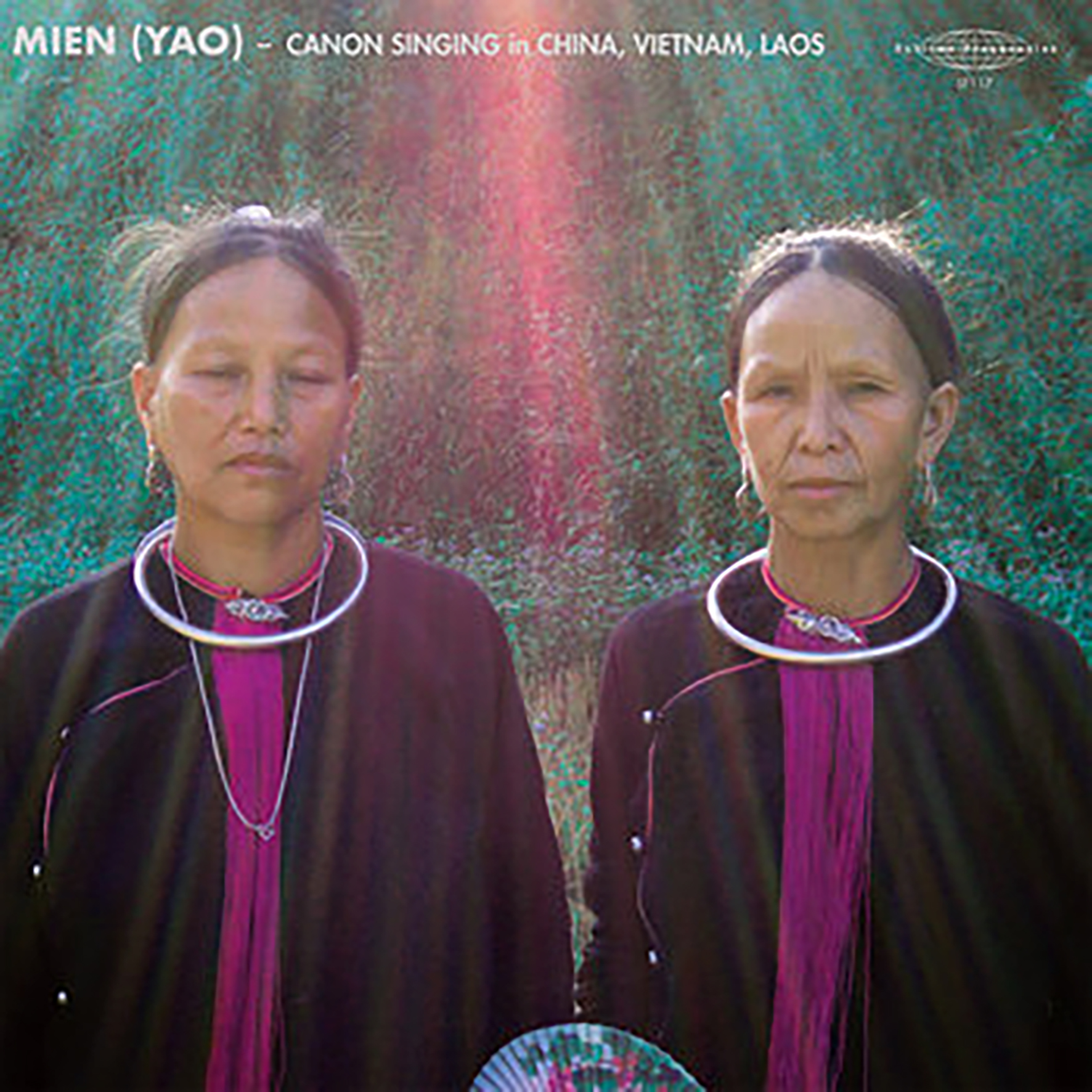 This collection of (mostly) acapella field recordings from Kink Gong's Laurent Jeanneau truly emphasizes the "sublime" part of the Sublime Frequencies vision, as this is quite an eerily lovely and mesmerizing album. While the recordings span three different countries (China, Laos, and Vietnam), they are all roughly rooted in a single cultural milieu: the Chinese hill tribes known pejoratively as the Yao ("dog" or "savage"). Understandably, a large number of these tribal folk prefer the name Mien ("people"), but they are a multifarious bunch that have spread beyond China into Southeast Asia and evolved into numerous distinctive and divergent subcultures. The first half of the album is devoted to very pure and simple canon singing ("an initial melody is imitated at a specified time interval by one or more parts"), while the second half offers some compelling and more fleshed-out variations. While the "raw, ethereal, and cosmic" performances that Laurent captured need no additional enhancement to captivate me, the variations are every bit as great as the undiluted essence and give the album an impressively strong dynamic arc.
This collection of (mostly) acapella field recordings from Kink Gong's Laurent Jeanneau truly emphasizes the "sublime" part of the Sublime Frequencies vision, as this is quite an eerily lovely and mesmerizing album. While the recordings span three different countries (China, Laos, and Vietnam), they are all roughly rooted in a single cultural milieu: the Chinese hill tribes known pejoratively as the Yao ("dog" or "savage"). Understandably, a large number of these tribal folk prefer the name Mien ("people"), but they are a multifarious bunch that have spread beyond China into Southeast Asia and evolved into numerous distinctive and divergent subcultures. The first half of the album is devoted to very pure and simple canon singing ("an initial melody is imitated at a specified time interval by one or more parts"), while the second half offers some compelling and more fleshed-out variations. While the "raw, ethereal, and cosmic" performances that Laurent captured need no additional enhancement to captivate me, the variations are every bit as great as the undiluted essence and give the album an impressively strong dynamic arc.
The opening "Lan Pan Moon" is a haunting and chant-like duet between two Laotian women (Keo and Na) centered upon a droning root tone. While the piece could not be much more simple melodically, the two women achieve an otherworldly beauty in the way they harmonize around the hypnotically cyclical motif. In fact, it feels akin to a harmonic dance, as the two voices keep diverging then reconverging into quavering unison, and the whole thing feels akin to a Lucier-ian feat of phase manipulation. The following "Kai Tian Pi Di" is a similarly unaccompanied duet (from China this time), but it shares some common stylistic ground with old African American work songs (there is even some bluesy note-bending). The album's second half kicks off with another piece from China, but it seems like an especially virtuosic version of the form, as the lead voice embellishes the central melody with a host of unusual bends, stammers, and ululation-like flourishes. The closing "Dao Cham" (from Vietnam) is still more divergent, however, as the heart of the piece is the clanging and rattling percussion of a lively ritualistic street procession. Gradually, the voices of the singers grow more prominent, yet the real beauty of the piece lies in how the various voices (singing and otherwise) lysergically drift in and out of focus. While I am not sure how intentional that was on Jeanneau's part, I certainly enjoy the effect, as it nicely blurs the line between field recording and sound collage. Due to the propulsive rhythm, the metallic physicality of the cymbals, and the surprise psychedelic elements, "Dao Cham" is my personal favorite on the album, but every single one of these pieces could be a revelation for adventurous ears.
Samples can be found here.
Read More

